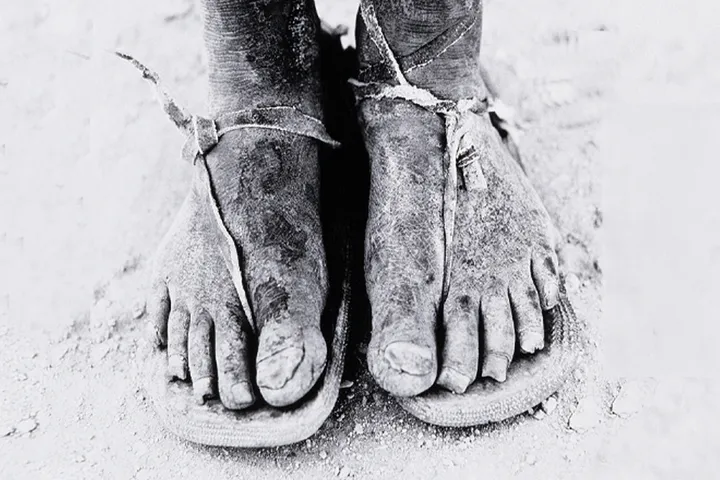The parable of the Good Samaritan is among the handful of Jesus’ stories that, whether or not you’re a church-going person, you can likely recount from memory. “Being a Good Samaritan” has become cultural shorthand for showing kindness and assisting those who are less fortunate. But Jesus’ story is far more subversive than a fable encapsulating principles to spur common decency.

In Luke 10, the parable of the good Samaritan provides not so much a moral tale for us to dissect or appropriate, but a story in which we live. It stretches our imagination, inviting us to walk that treacherous road through dangerous country, to know the threat of armed hooligans at every blind bend, to sense conflict over how to engage our religious convictions in complicated situations, to struggle over what exactly it means to love our neighbor, to grapple with how Jesus embodies reckless love.
When one of Israel’s religious experts tried to trap Jesus inside a tightly spun web of theological intricacies, Jesus reversed the interrogation: How do you understand the essence of God’s law? With his tactical examination careening out of control, the exasperated questioner found himself uttering the very words Jesus had quoted from Deuteronomy, as the greatest of all the commandments and the heart of everything Scripture teaches: “‘Love the Lord your God with all your heart and with all your soul and with all your strength and with all your mind’; and, ‘Love your neighbor as yourself’” (Luke 10:27 NIV).
You’ve nailed it, Jesus said. Go do that.
Feverishly scrambling to regain the upper hand, the religious expert had a burst of inspiration and devised one last conundrum. I’d be happy to, he answered, sitting back smugly, if only you could tell me who among all the masses is actually my neighbor. Without batting an eye, Jesus launched into a story.

Jesus’ tale commenced in an ominous setting, with the description of a man traversing the terror-filled road from Jerusalem to Jericho when he was overrun by armed bandits. These ruffians beat the man savagely, stripped him, and left him like road kill. Eventually a priest came by, but when he saw the bloody pile of a man, he crossed the road and hurried past, his eyes locked forward like a tractor beam. After a while a Levite (one who tended the temple) appeared, and he too crossed and hurried past, likely distracting himself by humming a worship tune and reciting a favorite Bible verse.
A third traveler turned the corner, a Samaritan, though that was the worst character Jesus could write into the story if He was hoping to pull this devout Jew to His way of thinking. Jews and Samaritans detested one another. They had theological animosity, each considering the other a heretic. They had racial antagonism, each considering the other inferior. When Jews saw a Samaritan, they avoided him like the plague. Purity was on the line. And reputation, too. We see much of this tension continuing now between Christians and Muslims, between white communities and communities of color, between those who have formal education or money and those who do not.
And wouldn’t you know, it was the detestable Samaritan who took pity on the man he was supposed to hate, bandaging his infected wounds and hoisting him onto his donkey. The Samaritan carried the gasping man to an inn, secured a room, and covered the cost, instructing the innkeeper to tend to every need for as long as necessary—he’d foot the bill. The Samaritan lavished this generosity not on a family member or a friend or even someone who shared his ethnicity or theological conviction. The Samaritan enacted this reckless grace for a neighbor.

Of course, everything’s wrong with this story. The ones with the correct doctrine (the priest and the Levite) disobeyed God’s command while the one with questionable faith (the Samaritan) fulfilled His instruction. It’s humbling—and essential—to remember that believing the right things doesn’t necessarily lead to doing the right things. The story’s disequilibrium teeters even more when we recognize that ancient interpreters (Ambrose, Origen, Augustine) typically understood Jesus as the Good Samaritan. Imagine that: Jesus casting Himself as the maligned figure arriving to rescue the one who is despised, helpless, and tossed aside. Sounds like the gospel.
Something else is wrong here. This whole exchange began with the religious expert asking who precisely was the neighbor he was responsible to love. But in Jesus’ concluding query (“Which of these three do you think proved to be a neighbor to the man who fell into the robbers’ hands?”), the point He stressed was not aimed at clarifying who is or is not a neighbor in need. Instead, Jesus forced us to grapple with whether or not we are a neighbor to whomever we find along the way. Jesus answered the wrong question—or so it seemed. In truth, Jesus answered the right question—the one that wasn’t asked.
According to Jesus, a person in dire need as well as a person with resources aplenty are bound in a community of friendship. We are in this together. One of the parable’s strange truths is that we find Jesus in each person we encounter, even in those people we most detest. In every God-beloved human, we discover our neighbor: every desperate person and every accomplished person; every person we see as a friend and every person we consider an enemy; every person possessing a fat bank account and every person without two pennies to his name.
Some scholars suggest that Jesus did not cast Himself as the Good Samaritan but rather (shockingly) as the bloodied man, the one who suffered at the hands of human violence. That interpretation has merit, though it requires a good bit of parsing. Yet perhaps it’s a mistake to see Jesus as any single character. On the cross, Jesus both suffered with us (the bloody man) and healed us (the Good Samaritan). Jesus, after all, overwhelms every human expression of goodness. He is not a player in the story. Jesus is the story.
The reckless love of neighbor at the center of this parable could never be confused with our humanly contrived attempts at benevolence and niceness. Rather, the story points toward the immeasurable, sacrificial love of Jesus. In Christ, God both suffered and saved, loving even the unlovely with irrational abandon. And now God invites us, by the power of the Spirit, to join Him as reckless lovers. As neighbors.
Illustrations by Adam Cruft





